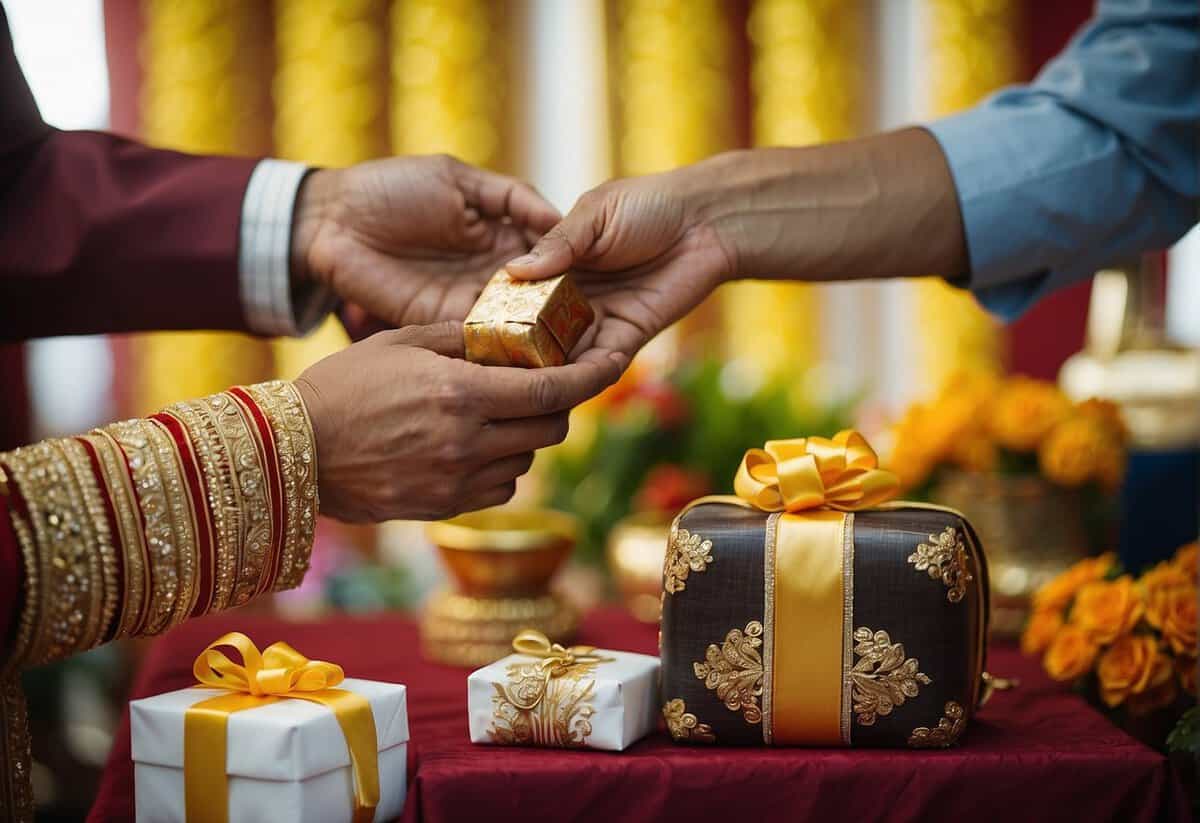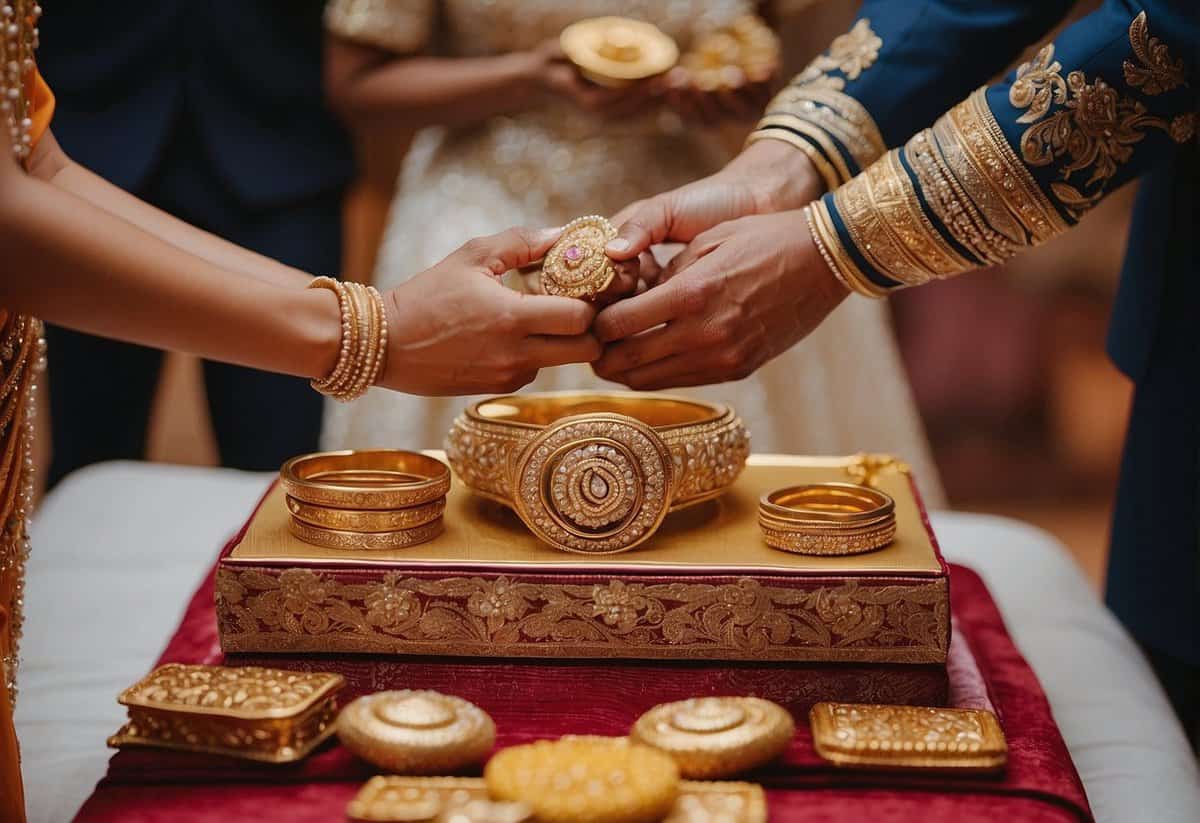What Is It Called When the Groom Pays the Brides Family? Exploring the Tradition of Dowry
When the groom or his family makes a payment to the bride’s family as part of a marriage arrangement, it is commonly referred to as a “bride price” or “bride wealth.” This practice, which differs from a dowry, involves a transfer of money, property, or other forms of wealth before the marriage takes place. Bride price is an ancient custom with deep cultural significance in various societies and is seen as a symbol of commitment and a way to forge alliances between families.

While the tradition of the bride price can be viewed as a gesture of respect and appreciation towards the bride’s family, it also has practical implications. It reflects the financial aspects of weddings and the shift of responsibility from the bride’s family to the groom’s family. The exact nature of these payments can vary greatly depending on cultural norms and the financial situations of those involved, with some cultures requiring substantial payments while others regard symbolic tokens as sufficient.
Key Takeaways
- “Bride price” is the term for payments made by the groom to the bride’s family.
- This tradition has cultural importance and often signifies respect and alliance between families.
- The financial transaction symbolizes the change in responsibility from the bride’s to the groom’s family.
Cultural Significance and History

When you hear about the concept of the groom paying the bride’s family, it’s typically referring to the traditional practices known as “dowry” or “bride price.” Each has its distinct historical roots and cultural relevance that reflect the values and societal structures of the times.
Historical Roots of Dowry
Dowries date back to ancient civilizations. One of the earliest examples includes the Code of Hammurabi, which specified that a bride’s family must provide a dowry, which would be returned in case of divorce. In Ancient Greece, dowry—or “proika”—was a gift to the groom’s family that also offered some protection to the wife.
Dowry in Different Cultures
In Asia and Africa, the tradition of dowry has manifested in different forms. Mahr, in Islamic cultures, is a mandatory payment by the groom to the bride at the time of marriage. In South Asia, the dowry system often involves substantial transfers of wealth from the bride’s family to the groom’s. Conversely, the “bride price” is a sum of money or quantity of goods given to the bride’s family, predominantly found in African cultures and often supporting polygamous relationships.
Modern Perceptions and Changes
Today, your perceptions of dowry and bride price are changing. These practices are illegal in many countries and widely viewed as outdated in monogamous, modern societies. However, they continue in various forms, often symbolic, reflecting a blend of tradition and contemporary values. The cultural significance of these practices is evolving, as they adapt to new social norms and legal frameworks.
Financial Aspects of Weddings

When planning your wedding, it’s essential to understand the financial components that come into play. This includes setting a feasible budget, determining who will cover certain expenses, and having conversations about financial contributions.
Budgeting for the Wedding
To start off, having a clear and detailed wedding budget is crucial. List all potential costs, from venue rental to catering, and decide on a threshold you’re comfortable with. Remember to account for unexpected expenses by allotting a portion of your budget as a buffer.
- Venue: 40-50% of total budget
- Catering: 20-30%
- Photography/Videography: 10-15%
- Attire and Beauty: 5-10%
- Miscellaneous (Invitations, Decorations, etc.): 5-10%
Who Pays for What?
Understanding who pays for the wedding can vary based on traditions and personal circumstances. Traditionally, the bride’s family might cover the bulk of the costs, while groom’s parents may be expected to pay for certain aspects such as the rehearsal dinner. However, modern practices see a mix of both families, and often the couple themselves, contributing to the expenses.
- Bride’s Family: Ceremony, attire, reception costs
- Groom’s Parents: Rehearsal dinner, sometimes honeymoon
- Couple: Rings, honeymoon, miscellaneous expenses
Consulting with expert advice can provide perspective on customary financial roles, whereas bridal guides can offer a breakdown of specific costs.
Negotiating Financial Contributions
When discussing financial contributions, it’s important to approach the subject with sensitivity and openness. Start the conversation early and ensure all parties are on the same page. Consider your family’s traditional values, but also be open to contemporary approaches where costs are shared more equally.
- Discuss budget early
- Be transparent about expectations
- Respect each party’s financial situation
Remember that every wedding is unique, and the allocation of expenses should reflect what is best for you and your family.
Wedding Preparations and Responsibilities

As you dive into the myriad details of wedding preparations, understanding the traditional roles and responsibilities of both the groom’s and bride’s family can help you navigate this exciting journey with ease.
Role of the Groom’s Family
Traditionally, the groom’s family has had specific responsibilities when it comes to wedding preparations. They are often expected to host the rehearsal dinner, a key event that takes place after the wedding rehearsal and before the wedding day. It’s a time for both families to come together and celebrate the upcoming union. Besides, if adhering to tradition, they might also contribute to certain costs such as the bride’s bouquet or the honeymoon.
- Financial Contributions:
- Rehearsal dinner
- Honeymoon (varies)
- Bride’s bouquet and groomsmens’ boutonnieres
- Corsages for honored guests
Role of the Bride’s Family
The bride’s family typically shoulders a more substantial portion of the wedding expenses. They are traditionally responsible for the engagement party and cover costs for services such as the wedding planner, venue, and decor. The family also takes care of the invitations and other day-of stationery needs. Their involvement is crucial in setting the tone and style of the wedding.
- Expenses and Planning:
- Engagement party
- Wedding planner services
- Venue booking and decoration
- Wedding day stationery
Planning and Coordination
Effective wedding planning demands close coordination between both families and potentially a professional wedding planner. Your main tasks include setting dates, choosing a venue, organizing the guest list, and finalizing the details for events leading up to the wedding, such as the engagement party and rehearsal dinner. With so many aspects such as invitations and decor relying on a seamless timeline, the role of a detailed-oriented wedding planner becomes invaluable for ensuring that your special day unfolds without a hitch.
- Key Tasks:
- Set important dates (engagement, rehearsal, wedding day)
- Choose and book venues
- Manage guest invitations and RSVPs
- Coordinate between service providers and families
Frequently Asked Questions

This section aims to answer your queries about the traditions and practice of grooms paying the bride’s family, which is often steeped in cultural significance.
Who traditionally pays the bride’s family in a marriage arrangement?
Traditionally, it is the groom’s responsibility to pay the bride’s family. This payment is known as the bride price or bridewealth and is prevalent in many cultures around the world.
What is the significance of the bride price in various cultures?
The bride price holds considerable cultural significance, symbolizing the groom’s ability to provide for the bride and acting as compensation for the bride’s family’s loss of her economic contributions.
What are the common reasons cited for the practice of a groom offering monetary value to a bride’s family?
Often, the monetary value offered to the bride’s family is seen as a gesture of goodwill, an affirmation of the groom’s commitment, and a means to foster strong family ties.
Why has there been a call to abolish the bride price in some societies?
The call to abolish the bride price in some societies stems from concerns over gender equality, the financial burden on the groom, and the perception of women being ‘bought’ or commodified.
What are the differences between a dowry and a bride price?
A dowry refers to wealth transferred from the bride’s family to the groom or groom’s family, while the bride price is a payment made from the groom to the bride’s family.
How does bridewealth factor into traditional matrimonial customs?
Bridewealth is a pivotal part of traditional matrimonial customs; it’s often a precondition for marriage that validates the union in the eyes of the community and establishes a bond between the two families.

